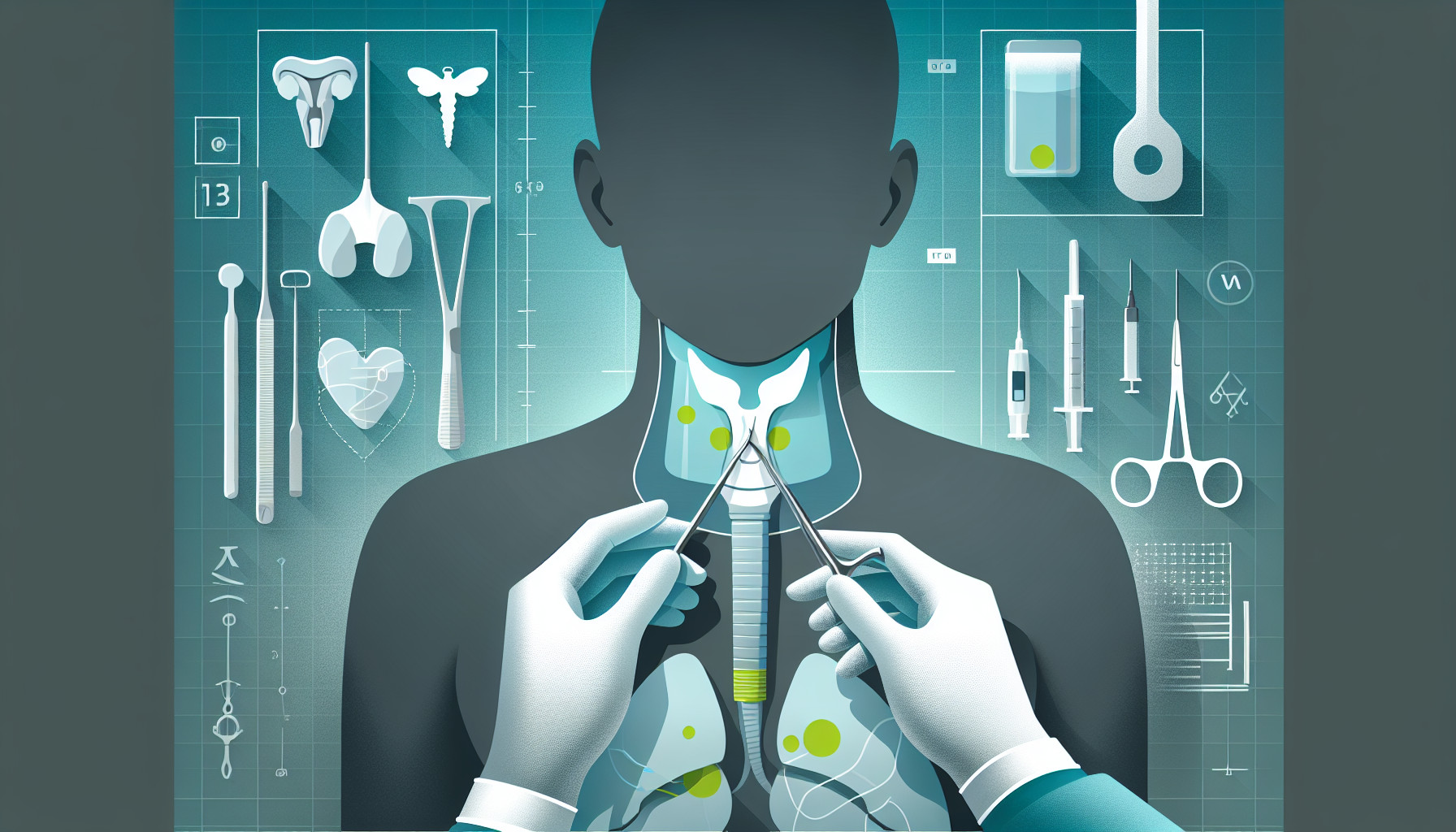Our Summary
This research paper is about a medical incident that occurred during a specific type of thyroid surgery. The surgery, called transoral endoscopic thyroidectomy vestibular approach (TOETVA), is performed through the mouth and can potentially harm a major vein in the neck. This damage can lead to a dangerous condition where carbon dioxide gas (CO2) enters the bloodstream, called a CO2 embolism.
The authors report on a 67-year-old woman who experienced this issue during her thyroid surgery. The vein was accidentally cut, leading to a rapid decrease in her CO2 levels, oxygen levels, heart rate, and blood pressure. She eventually experienced cardiac arrest, but doctors were able to resuscitate her and fix the damaged vein.
The paper includes a review of other cases where CO2 embolism occurred during this type of surgery, and discusses how to treat and prevent this problem. The authors highlight that this issue might be more common in the early stages of learning this procedure, particularly in developing countries. Therefore, surgeons and anesthesiologists need to be aware of this risk.
FAQs
- What risks are associated with transoral endoscopic thyroid surgery?
- What is a CO2 embolism and how can it occur during thyroid surgery?
- How can CO2 embolism be prevented during transoral endoscopic thyroidectomy vestibular approach (TOETVA)?
Doctor’s Tip
A helpful tip a doctor might tell a patient about thyroidectomy is to be aware of the potential risks involved, such as injury to surrounding blood vessels like the anterior jugular vein. It is important for patients to discuss these risks with their surgeon and anesthesiologist before the procedure, and to follow post-operative care instructions carefully to minimize complications. If any unusual symptoms or complications arise after surgery, such as sudden decreases in heart rate or blood pressure, it is important to seek immediate medical attention.
Suitable For
Patients who are typically recommended thyroidectomy include those with thyroid cancer, large thyroid nodules causing symptoms, hyperthyroidism not controlled by medication, thyroid nodules suspicious for cancer, and recurrent thyroid nodules after previous thyroid surgery. Other indications for thyroidectomy may include Graves’ disease, toxic multinodular goiter, and substernal goiter.
Timeline
Before thyroidectomy:
- Patient undergoes a thorough evaluation by an endocrinologist or surgeon to determine the need for thyroid surgery.
- Pre-operative testing such as blood work, imaging studies, and possibly a fine needle aspiration biopsy are performed to assess the thyroid gland.
- Patient may need to discontinue certain medications prior to surgery, such as blood thinners.
- Patient is educated about the procedure, potential risks and benefits, and post-operative care.
After thyroidectomy:
- Patient is monitored closely in the recovery room for any complications such as bleeding, infection, or difficulty breathing.
- Pain management is provided as needed.
- Patient may need to stay in the hospital for a day or two for observation.
- Patient is instructed on how to care for the incision site, manage pain, and when to follow up with their surgeon.
- Patient may need to take thyroid hormone replacement medication for the rest of their life if the entire thyroid gland was removed.
- Follow-up appointments are scheduled to monitor thyroid hormone levels and overall health.
What to Ask Your Doctor
What are the risks and potential complications associated with thyroidectomy surgery, including the risk of carbon dioxide embolism?
How experienced are you in performing transoral endoscopic thyroid surgery, specifically the TOETVA approach?
What measures do you take to prevent and manage potential complications, such as carbon dioxide embolism, during the surgery?
How will my vital signs be monitored during the procedure to ensure early detection of any complications?
What is the plan for managing any potential complications that may arise during or after the surgery, including carbon dioxide embolism?
What is the likelihood of experiencing carbon dioxide embolism during this specific procedure, and what steps will be taken to minimize this risk?
Are there any specific factors in my medical history or anatomy that may increase my risk of complications during thyroidectomy surgery?
What is the protocol for responding to a suspected carbon dioxide embolism during the surgery, and how quickly can it be addressed?
How will my recovery and follow-up care be affected if a complication, such as carbon dioxide embolism, occurs during the surgery?
Are there any alternative approaches or techniques that could be considered to minimize the risk of complications during thyroidectomy surgery?
Reference
Authors: Yap RV, Buenafe AA, Tankiatsy J, Bejasa MM, Mahani IN, Calayag G. Journal: Asian J Endosc Surg. 2023 Oct;16(4):774-780. doi: 10.1111/ases.13231. Epub 2023 Aug 7. PMID: 37550828
